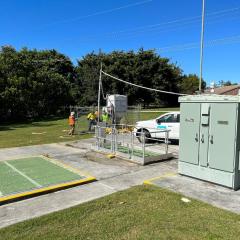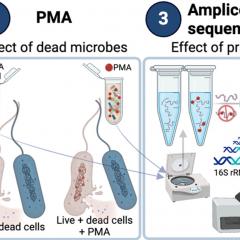Nitrous oxide is a by-product of the process of biologically removing nitrogen from wastewater and represents up to 50 per cent of total greenhouse gas (GHG) emissions released from wastewater treatment plants.
Dr Liu Ye, Senior Lecturer at UQ’s School of Chemical Engineering, said that the emissions share from wastewater handling units is not significant compared with other sectors, but to the water industry itself, it is significant.
“With a global warming potential 310 times greater than carbon dioxide, nitrous oxide can represent more than 70% of the total GHG emissions from a wastewater treatment plant” said Dr Ye.
“Many Australian water utilities have set the aspirational target of achieving GHG neutral operations, and this new research allows us to record and quantify nitrous oxide emissions for the very first time and will eventually allow us to predict emissions at any of our locations at any time.”
Trialled in partnership with the SA Water, the ground-breaking research collects and models nitrous oxide through multiple floating ‘hoods’ anchored along activated sludge plants and pipe through a computer monitoring system, which then analyses the gas in short intervals.
SA Water’s Lead Scientist Environment and Wastewater Dr Ben van den Akker said the technology allows emissions of the gas to be monitored in real time, for the very first time, and the outcomes of this research offers a long-term cost effective solution for water utilities to reduce emissions.
This research from UQ’s Advanced Water Management Centre and School of Chemical Engineering, in collaboration with SA Water, has been included in the new Guidelines for National Greenhouse Gas Inventories as updates in the Wastewater Treatment and Discharge chapter.
This research also won the 2018 South Australian Research Innovation Award as part of the Australian Water Association Water Awards.



